Podoscypha Multizonata
By Mike on Saturday, October 9, 2010, 20:05 - Permalink
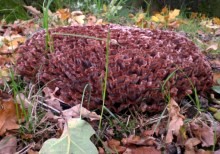 I think this might be the most excited I've ever been about a fungus - and it isn't even edible - so what's going on? Well, it's a bit special, because it's big, strange-looking, and really quite uncommon - it's called Podoscypha multizonata - the Zoned Rosette.
I think this might be the most excited I've ever been about a fungus - and it isn't even edible - so what's going on? Well, it's a bit special, because it's big, strange-looking, and really quite uncommon - it's called Podoscypha multizonata - the Zoned Rosette.
Identification Of Wild Fungi
The description here is not intended to be sufficient for conclusive identification of these wild fungi - the reader should understand that the possible outcomes of misadventure with wild-gathered fungi include serious illness and death.IT IS YOUR OWN RESPONSIBILITY to take adequate steps in identifying any fungi you gather for the table - doubly so if you are intending to share them with someone else.
Informal descriptions, such as the one on this page, are not adequate for full identification - it's just good sense to fully and independently verify everything you read here.
Rules of thumb or folk wisdom identification methods are frequently unreliable.
Consult a comprehensive identification guide (I recommend Roger's Mushrooms (site no longer available - see here) and Wild Mushrooms Online) or best of all, talk to a living human expert mycologist.
This Fungus Is Not Edible
(But the page is tagged 'fungi', so you get the usual lecture above about wild fungi anyway)
What Is It?
Podoscypha multizonata - a fungus parasitic on surface or buried roots of deciduous trees, especially oak and beech. The specimen I found was very large and impressive.
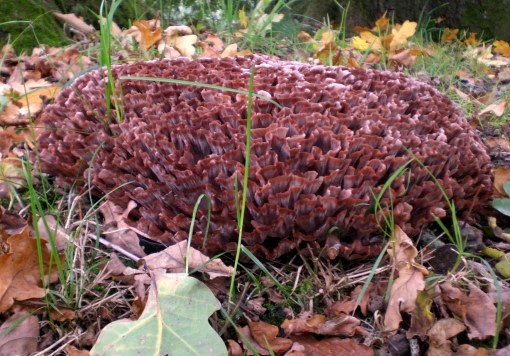
(Actually, I first saw it in the same location a couple of years ago, but only recently learned its true identity)
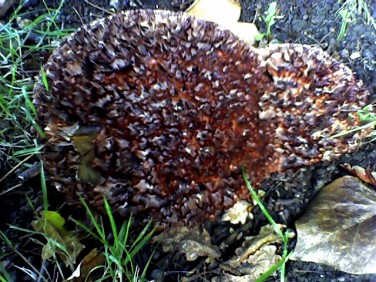 In the early stage of development, the fruiting body is a dense and hard spiky ball with a highly geometric/symmetric appearance.
In the early stage of development, the fruiting body is a dense and hard spiky ball with a highly geometric/symmetric appearance.
The surface texture was slightly slippery or greasy when I took this photo (sorry about the poor quality - it was taken by a cellphone camera).
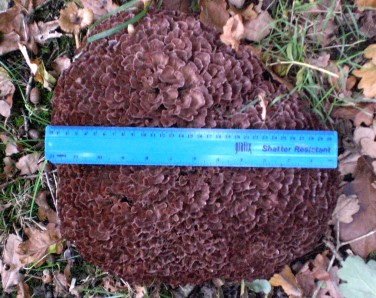 Over the course of a couple of weeks, this expands to form flattish, concentric rosette of rubbery frills.
Over the course of a couple of weeks, this expands to form flattish, concentric rosette of rubbery frills.
As mentioned above, this is a magnificent and large specimen - for reference, I gently placed a 12 inch rule on it for this picture.
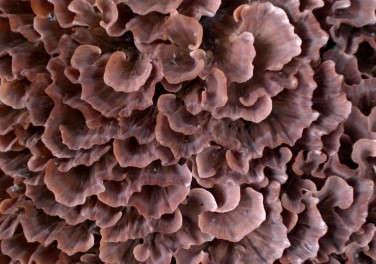 Taking a closer look at the detailed structure from above, the frills are actually a collection of nested scalloped, spoon or fan-shaped caps.
Taking a closer look at the detailed structure from above, the frills are actually a collection of nested scalloped, spoon or fan-shaped caps.
The colour of the fungus is quite elusive - perceived as varying from purplish-red to tawny brown, depending on the quality and quantity of daylight illumination (the colour isn't actually changing, but it seems to).
 Let's take a step back again and look at the whole fruiting body - it's fascinatingly complex and alien-looking. This one is near a roadside - I hope nobody mistakes it for a cauliflower fungus or some other potential edible and destroys it by trying to collect it.
Let's take a step back again and look at the whole fruiting body - it's fascinatingly complex and alien-looking. This one is near a roadside - I hope nobody mistakes it for a cauliflower fungus or some other potential edible and destroys it by trying to collect it.
